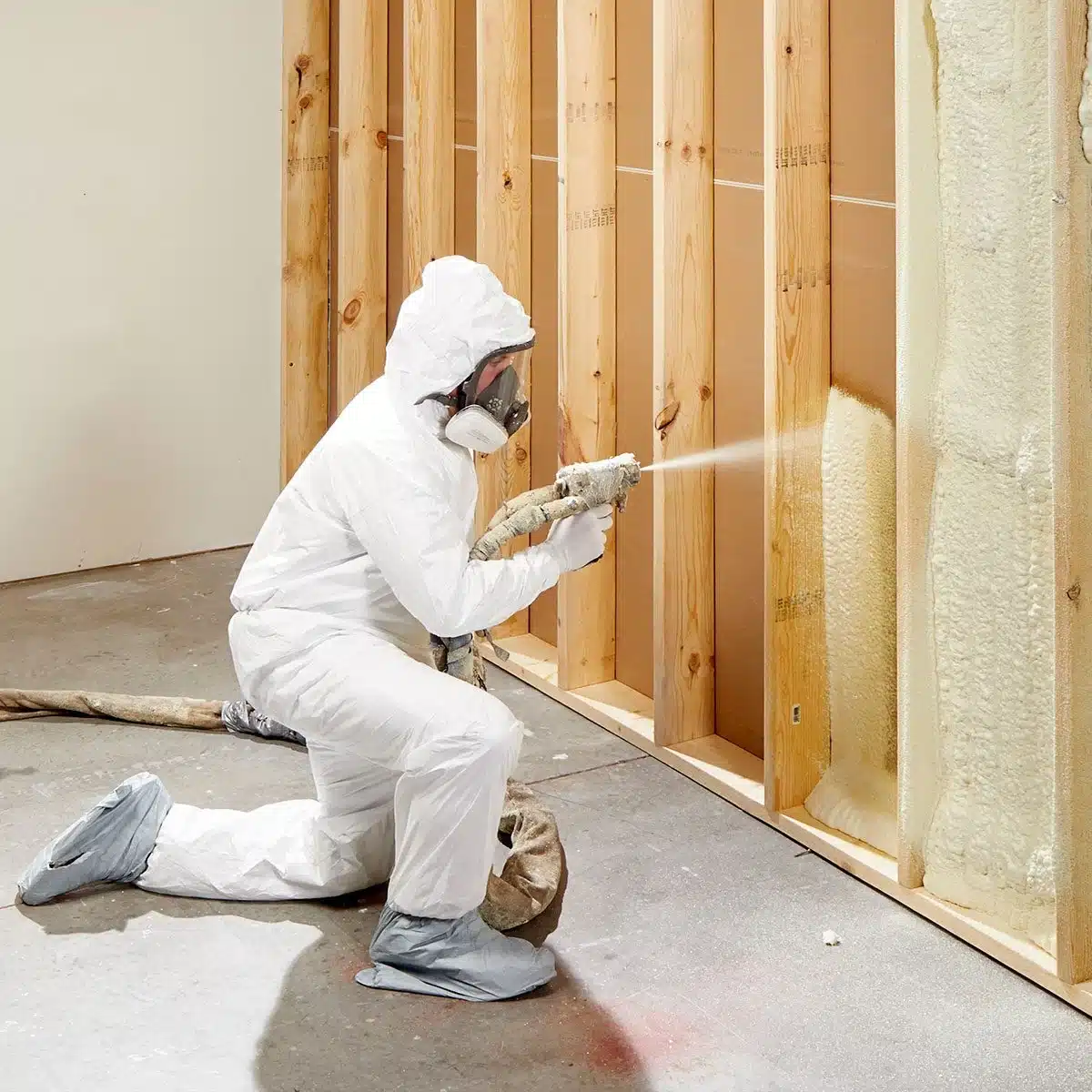Spray foam insulation is a popular choice for energy efficiency and sealing air leaks in residential and commercial buildings. However, it is not suitable for every situation. Using spray foam in the wrong places can lead to structural damage, health risks, and fire hazards. This article explores areas where spray foam insulation should be avoided, ensuring proper insulation choices for safety and longevity.
When Spray Foam Insulation Should Not Be Used
1. Areas Prone to Moisture Accumulation
Spray foam insulation is effective at creating an air-tight seal, but it can trap moisture in certain conditions, leading to mold growth and structural damage.
Crawl Spaces with Poor Ventilation
Crawl spaces are highly susceptible to moisture accumulation, and if improperly ventilated, closed-cell spray foam can seal in dampness, causing wood rot and mold formation.
Basements with Water Intrusion Issues
Applying spray foam in basements that have water seepage problems can exacerbate moisture retention, increasing the risk of mold. In such cases, waterproofing should be prioritized before insulation is considered.
2. Areas Exposed to High Heat or Open Flames
Certain areas in a building require insulation that can withstand extreme heat. Spray foam is combustible and should be kept away from open flames or intense heat sources.
Near Electrical Panels and Wiring
Over-application of spray foam around electrical wiring can lead to overheating, posing a fire risk. Improper use can also make future electrical repairs difficult and dangerous.
Around Recessed Lighting Fixtures
Most recessed lighting fixtures generate heat, and surrounding them with spray foam insulation can lead to overheating and potential fire hazards. Always check for IC-rated fixtures before applying insulation.
3. Enclosed Spaces Without Adequate Ventilation
Spray foam expands and releases chemicals during curing. When applied in confined, poorly ventilated areas, it can pose significant health risks.
Attics Without Proper Air Circulation
While spray foam is commonly used in attics, it should not be applied in areas with inadequate ventilation, as trapped fumes during installation can create respiratory hazards.
Small, Sealed-Off Rooms
Rooms with limited air exchange can become hazardous during spray foam application, as the chemicals require proper ventilation to dissipate safely.
4. Historic or Older Buildings
Historic structures require careful consideration when adding insulation, as spray foam can damage their integrity.
Walls with No Vapor Barrier
Many older buildings lack vapor barriers, and spray foam’s impermeability can trap moisture within walls, leading to rot and degradation.
Brick and Stone Walls
Spray foam can prevent traditional materials like brick and stone from “breathing,” leading to trapped moisture that can cause long-term damage to the structure.
5. Areas with Frequent Structural Movement
Some parts of a building are subject to constant expansion, contraction, or movement, which can cause spray foam to crack over time.
Wood-framed windows and Doors
Applying spray foam around moving elements like wooden window frames can restrict their movement, causing warping or difficulty in operation.
Seismic Zones
In areas with frequent seismic activity, rigid spray foam may crack or detach from surfaces, reducing its effectiveness.
Alternative Insulation Options for Restricted Areas
If spray foam is not suitable for certain areas, alternative insulation materials can be considered.
| Area | Recommended Insulation Alternative |
| Moisture-Prone Areas | Fiberglass batts, rigid foam board |
| High-Heat Areas | Mineral wool, fire-rated insulation |
| Enclosed Spaces | Blown-in cellulose, fiberglass batts |
| Historic Buildings | Natural fiber insulation, rigid foam board |
Safety Considerations When Using Spray Foam Insulation
Even in appropriate areas, following best practices ensures safe and effective application.
Proper Ventilation During Installation
The chemicals in spray foam release volatile organic compounds (VOCs), requiring sufficient ventilation for at least 24 hours post-application.
Hiring a Professional Installer
Professional installers have the expertise to apply spray foam correctly, preventing common issues such as improper curing, excessive expansion, or fire risks.
Checking for Fire Safety Compliance
Some spray foam formulations require additional fire barriers, such as drywall, to meet building codes. Always verify local regulations before installation.
Conclusion
While spray foam insulation is a highly effective solution for energy efficiency and air sealing, it is not suitable for every area. Understanding where not to use spray foam—such as moisture-prone locations, high-heat zones, enclosed spaces, historic buildings, and areas with structural movement—ensures a safe and effective insulation choice. For expert guidance on spray foam insulation in Fresno, CA, consulting professionals is highly recommended.
Get Expert Insulation Solutions
For professional spray foam insulation services in Fresno, CA, Golden State Spray Foam provides expert installation tailored to your home or business needs. Contact us today to discuss the best insulation solutions for your property.
Frequently Asked Questions
Can spray foam insulation cause moisture problems?
Yes, in areas with high humidity or water seepage, spray foam can trap moisture, leading to mold and structural damage.
Is spray foam safe around electrical wiring?
Spray foam can be used around electrical wiring, but excessive application can cause overheating or make future repairs difficult.
Can spray foam be removed if applied incorrectly?
Yes, but removal can be labor-intensive. It often requires cutting out affected sections, which can damage surrounding materials.
What insulation is better for attics spray foam or fiberglass?
It depends on the attic’s ventilation. Spray foam is effective in well-ventilated spaces, while fiberglass is better for moisture-prone areas.
Is spray foam insulation flammable?
Yes, spray foam is combustible and should be kept away from heat sources unless covered with a fire-resistant barrier.
How long does spray foam insulation last?
Spray foam can last 20–30 years if properly applied and maintained.
Can I install spray foam myself?
DIY spray foam kits are available, but professional installation ensures correct application and safety compliance.
Does spray foam damage walls?
If applied incorrectly, spray foam can exert pressure on walls, potentially causing damage, especially in older structures.
Should spray foam be used in Fresno, CA homes?
Yes, but it depends on the specific area. It works well in attics and walls but should be avoided in moisture-prone areas like basements.
What is the cost of spray foam insulation in Fresno, CA?
The cost varies based on factors like home size and insulation type, typically ranging from $1.50 to $3 per square foot.


